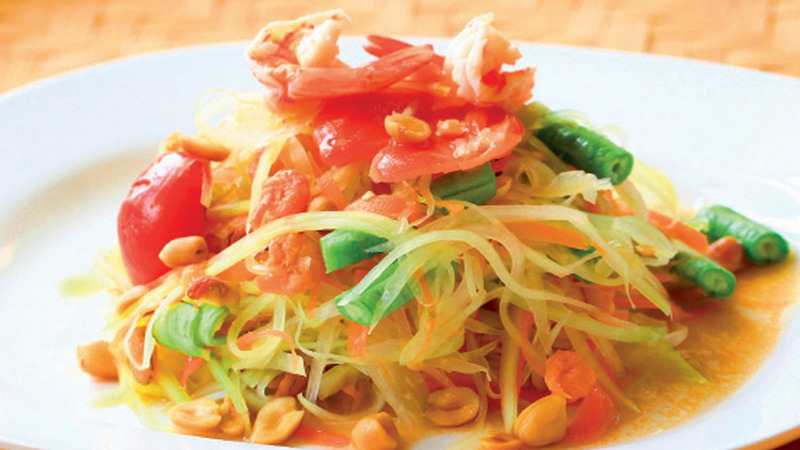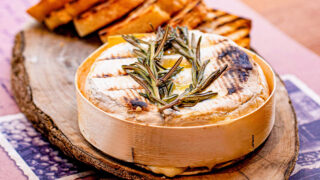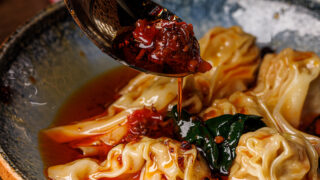Beate Baldry forages for exciting Asian ingredients readily available in Hong Kong, to discover their traditional uses, health benefits and ways to incorporate them into Western home cooking. Here, she find out more about chayote.
Featured ingredient
Chayote
(aliases:)sayote, choko, cho-cho, mirliton, pear squash, vegetable pear
What is it?
Belonging to the gourd family, the chayote is a pale green vegetable that resembles an oversized pear-cum-apple, often with many folds and ridges.
The flavour
Uncooked, the chayote has a crisp, pear-like crunch and a mild taste similar to that of raw green papaya (the unripe variety used for Thai salads). Chayotes retain their crisp texture throughout cooking but their flavour, while still mellow, becomes more like that of squash.
Where do you find it?
In the fresh vegetable section of most large supermarkets and in wet markets like Tekka and Empress.
Uses
- Its use in Southeast Asia, especially the Philippines and Indonesia, is widespread – in stir-fries, curries, soups and stews.
- In India it is used in vegetable stews and is called a Bangalore brinjal.
- In Northern Thailand, the shoots, the greens and the flesh are used in soups, salads and stir-fries .
- In Latin America, chayote is often breaded and fried, or used in soups and salads.
Health benefits
Chayote is technically a fruit, but it has a high water and fibre content and is relatively low in natural sugars, and therefore calories. It is high in vitamin C, potassium and amino acids.
Top tip
Although the skin and seeds can be eaten, the chayote is more commonly peeled and the seed removed before being prepared, and eaten raw or cooked.
Cook it at home: Sayote Som Tam Salad
Normally made with green papaya, som tam is a world-renowned Thai salad which blends a satisfying mix of chilli, salty and sweet flavours. Green papaya can be harder to find, but if you replace it with chayote you get the same crunchy texture and authentically exotic Southeast Asian flavour. It’s also easy to make, low-calorie and very healthy. Savour this on its own as a light lunch, or for dinner as a side dish with a curry, a steaming bowl of jasmine rice and good old Tiger beer.
Serves 4 as a side dish
Ingredients
Salad:
- 1 medium-sized chayote
- ½ cup roasted peanuts
- A handful of cherry tomatoes, cut into wedges
- 3 spring onions, sliced
- A handful of fresh coriander
- 1 or 2 red chillies, sliced, seeds removed
- 12 poached prawns
- 1 cup lightly bashed yard beans
- Iceberg lettuce to serve
Dressing:
- 1 tablespoon fish sauce
- 2 tablespoons canola oil
- 2 tablespoons fish sauce
- 3 tablespoons lime juice
- 1 tablespoon palm sugar (or light brown sugar or honey)
Directions
- Shake all of the dressing ingredients together in jar. Taste for your preferred balance of sweet, salty, sour and spicy, adding more honey, lime juice, fish sauce or chilli as desired.
- For the main salad, use a sharp knife to peel the chayote, then slice it in half and remove the seed. Cut the flesh into fine julienne; or grate it, which gives a wetter texture. Place in a large bowl.
- Add sliced tomato, spring onion, chilli, green beans, prawns and most of the coriander. Pour over the dressing and toss well to combine.
- To serve, place onto crunchy, bowl-shaped leaves of iceberg lettuce, and top with the remaining coriander and a sprinkling of peanuts. Tuck in!
Top tip
You can buy nifty little scrapers at local utensil shops and wet markets that shred the chayote into fine julienne really quickly.
Send us a recipe!
If you have a favourite dish you’d like to submit for an upcoming issue, please send an email titled “Recipe Corner” to contribute@expatliving.hk with your recipe, a photo of yourself, and a few words about your dish.
Like this? See more in our Wine & Dine section:
Restaurants with great veggie options
15 tasty lunch locations to try
Dining: New venues and menus






